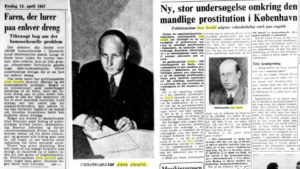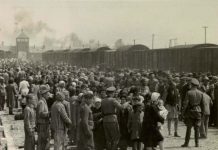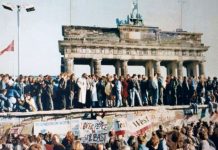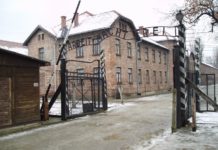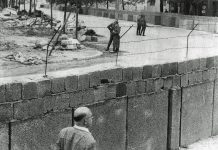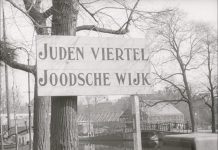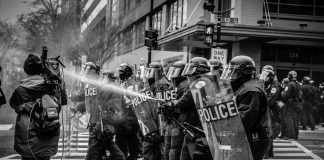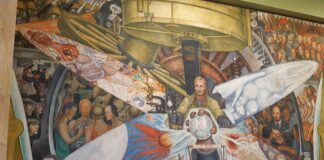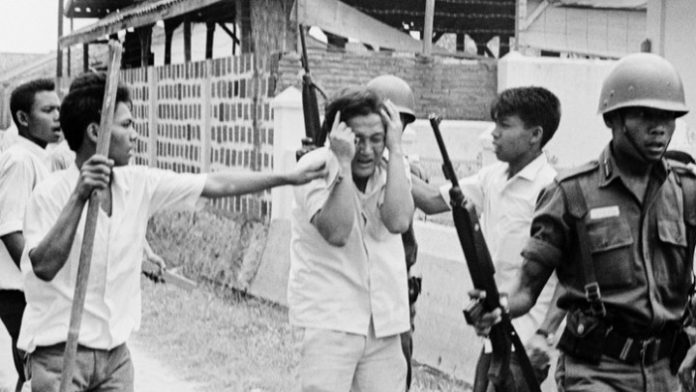
Socialistisk Biblioteks Tidslinje med links til begivenheder og personer i 1965.
Se også Index over personer, organisationer/partier og værker (som bøger, malerier, mm.), steder, begivenheder, mv., der er omtalt på hele Tidslinjen, titler og indhold på emnelisterne osv.
24. januar 1965
Den britiske konservative politiker Winston Churchill dør (født 30. november 1874). Som britisk premierminister under Anden Verdenskrig blev han en af Anden Verdenskrigs sejrherrer.
Se:
- Winston Churchill (Wikipedia.dk) + Winston Churchill (Wikipedia.org)
- Category: Churchill’s Crimes (RogueNation.org)
Den virkelige Winston Churchill. Af Richard Seymour (Solidaritet.dk, 30. november 2020). “Churchill var ingen helt – han var en gemen racist, en voldsfanatiker og en indædt tilhænger af imperialisme.” In English: The real Winston Churchill (Jacobin, January 11, 2018).
Winston Churchill was not your friend. By Tariq Ali (Jacobin, January 3, 2022). “Winston Churchill has become all but deified in modern Britain. But in his own lifetime, Churchill was often recognized for who he really was: an unrepentant imperialist and racist, a foe of trade unions and women’s rights, and a defender of elite privilege.” Extract from Tariq Ali’s forthcoming book, Winston Churchill: His Times, His Crimes (Verso Books, 2022, 448 p.). See review of the book by Liam Kennedy: Winston Churchill’s legacy is indefensible (Jacobin, September 21, 2022). “… above all, Churchill was both a product of and a lifelong enthusiast for the British Empire” + John Newsinger: The spirit of Churchill: elitism and British Empire (Catalyst Review, September 20, 2022). “… the man who embodied the spirit of England during World War II was a brutal racist imperialist who reeked of class privilege” + review by Lindsey German (Counterfire, May 5, 2022). “Tariq Ali’s book is an essential antidote to the Churchill myth”. På dansk: Tariq Ali: Winston Churchill (Socialistisk Information, 21. maj 2022).
See also interview with Tariq Ali: Exorcising the cult of Churchill (International Socialism, Issue 176, Autumn 2022, p.71-78).
Winston Churchill: he fought for his class, never ours (Counterfire, May 8, 2020). “We repost Dominic Alexander’s 2019 article documenting Churchill’s record which tells a very different story to the heroic legacy of popular myth.”
Winston Churchill – a brutal bully and racist who was rightly hated by many (Socialist Worker, Issue 2587, 13 January 2018). “As a new film about Churchill is released, Darkest Hour, Simon Basketter takes issue with the myths that surround the former Tory leader.”
The real Winston Churchill. By Richard Seymour (Jacobin: Reason in Revolt, 11 January 2018). “Churchill was no hero — he was a vile racist fanatical about violence and fiercely supportive of imperialism.”
Winston Churchill: the man, the myth, the murderer (RS21: Revolutionary Socialism in the 21st Century, October 27, 2016). “Charlie Gardner considers the shocking historical record of the face of the new five-pound note.”
Was Churchill a racist? Oh yes! (Socialist Worker, Issue 2438, 27 January 2015). “As Winston Churchill is fawned over by politicians fifty years after his death, Annette Mackin looks at the legacy of the man who was beaten by Mr Bean in a poll of great Britons.”
Winston Churchill: A reactionary bigot (Weekly Worker, Issue 960, May 2, 2013). “Eddie Ford looks at Churchill’s toxic legacy.” See also reply from Paul Flewers: Anti-Semitism: Churchill and the Jewish question (ibid., Issue 964, May 30, 2013)
When Churchill starved India. By James Woudhuysen (Spiked Review of Books, No.39, November 2010). “Madhusree Mukerjee’s shocking account of the exploits of the Empire is well worth reading.”
Winston Churchill: a modern myth, Part One. By Harry Whittaker (In Defence of Marxism, 15 October 2008) + Part Two (20 October 2008). “The purpose of this article is to draw aside the veils of myth and legend which establishment historians and fawning admirers have spun around him.”
Taking Churchill at his words. By James Heartfield (Spiked, 26 November 2002). “Maybe we should let Churchill speak for himself …”
World War II, Churchill and the big lie. By Carol Brickley (Fight Racism, Fight Imperialism, Issue 120, August/September 1994). Review of Clive Ponting, Churchill (Sinclair Stevenson, 1994, 900 p.)
Churchill: a ruling-class militant (International Socialism, No.18, Autumn 1964). “Churchill’s politics were undistinguished, conventionally Right-wing.”
Winston Churchill: Tory war-dog. By C.L.R. James (Fourth International, Vol.10, No.2, February 1949). Review of Churchill’s book The Gathering Storm: “Politically he is as stupid a reactionary as ever.”
Se også på Socialistisk Bibliotek:
- Tidslinjen: 5. marts 1946, om “Jerntæppetalen” og den kolde krig
- Tidslinjen: 4.-11. februar 1945, om Churchill ved Jalta-konferencen med Roosevelt og Stalin.
21. februar 1965
Den sorte muslimske leder Malcolm X myrdes i New York.
(Født 25. maj 1925).
Se på Socialistisk Bibliotek:
Linkboxen: Malcolm X: (1925-1965)
2. april 1965
USA invaderer den Dominikanske Republik med 20.000 marinesoldater, for at ‘beskytte amerikanske interessser’.
Se:
- Dominikanske Republik (Leksikon.org).
- Operation Power Pack (Wikipedia.org)
- Juan Bosch (Wikipedia.org)
25. april 1965

DGS, Danske Gymnasieelevers Sammenslutning stiftes.
Links:
- Danske Gymnsieelevers Sammenslutning (Wikipedia.dk)
- Gymnasieelever.dk (eget site). Her også: Politiske papirer. “… fundamentet for organisationen og vores politik.”
Er lyset for de lærde blot? – i anledning af Danske Gymnasieelevers Sammenslutnings 50 års jubilæum (pdf). Red. Christofer Augustinus Vedsted (E-bog, udg. af DGS, 2015, 171 sider). Med bidrag fra en række tidligere aktive, nu medie- eller politiske personer.
Se også:
- Elevbevægelsen. Af Knud Holt Nielsen (Leksikon.org). Længere artikel.
- Uddannelsesprotester i Danmark efter 1960. Af Knud Holt Nielsen (Leksikon.org). Længere artikel.
4. juni 1965
Ophævelse af loven om det specielle prostitutions-forbud ift. mænd under 21 år (“Den grimme lov”) ophæves. Lov nr. 163 af 31. maj 1961 om ændringer i borgerlig straffelov gjorde det strafbart med kønslig forhold ved betaling eller løfte herom til en person af samme køn under 21 år, og førte bl.a. til forfølgelse af bøsser fra politiets og kriminelle miljøers side.
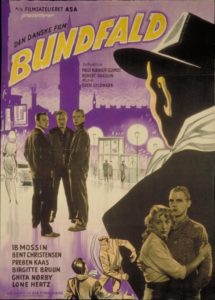
Aldersgrænse: Forbudt for børn u. 16 år (indtil 1970).
Dansk premiere 23.8.1957. “Det begynder en aften på Rådhuspladsen, hvor storbyens liv pulserer. Vi træffer på den 17-årige Anton Hansen fra Jylland … På Rådhuspladsen får to trækkerdrenge øje på ham, og Anton bliver et let offer.”
Se:
- ‘Den grimme lov’, 1961-65. Af Niels Nyegaard (Danmarkshistorien.dk, 4. juli 2017).
- Danske bøsser fik nok af Den Grimme Lov. Af Martin Ledstrup (Videnskab.dk, 11. december 2011). “… Københavns Rådhusplads var mindst lige så vigtig som Stonewall Inn i historien om frigørelsen af danske homoseksuelle.”
- Den grimme lov. Af Jørgen Lund (Socialistisk Arbejderavis, nr.268, 25. april 2007). “Danmark havde for 50 år siden en lov om kriminalisering af sexkunder. Som alle moralske love var det en fuser.” Til Enhedslistens debat om sexkunde-forbud: “Vi har i Danmark altså haft en lov, der skulle kriminalisere sexkunder. Og den var ingen succes. Tværtimod … gå aldrig tilbage til en fuser.”
- Mandlig prostitution (Wikipedia.dk)
- Seksuel lavalder (Wikipedia.dk)
- Sådan holdt Danmark op med at hade homoseksuelle. Af Christian Bennike (Information.dk, 12. august 2017). “Danskernes syn på homoseksuelle har gennemgået en revolution. Men hvordan gik det til?”
- Scene ‘To pølser med brød’ fra trækkerdrengemiljøet på Rådhuspladsen i filmen Bundfald (YouTube.com, 3:33 min). Medv. Preben Kaas, Bent Christensen og Ib Mossin.
Jens Jersild-debatten mv.:
Kommentarer og anmeldelser af Peter Edelbergs artikel og afhandling (Storbyen trækker: homoseksualitet, prostitution og pornografi i Danmark 1945-1976. Københavns Universitet, 2011):
- Da bøsserne blev forfulgt af Den Grimme Lov (Kvinfo, 30. april 2012; online på Internet Archive). Interview med Peter Edelberg. Scroll nedad.

- Den grimme lovs genealogi: Et kapitel af homoseksualitetens historie i Danmark (pdf). Af Peter Edelberg (Historisk Tidsskrift, bind 110, hæfte 1, 2010, s.166-208)
- Politiet hjalp de homoseksuelle til frihed og respekt (resume) (Kbh. Univ., Det Humanistiske Fakultet, 12. december 2011). Om Peter Edelbergs ph.d.afhandling.
- Jens Jersild og den grimme lov. Anmeldelse af Ole Hansen (Inferens, 17. maj 2011)
- Den danske konge af homofobi. Af Mads Ananda Lodahl (Modkraft.dk, 5. september 2010). Om Jens Jersild, politiinspektør i København i 1950’er.
-
Værtshushistorier: Cosy Bar (Dr TV, 10. december 2014, 29 min.; udløber 18. november 2021). “… mange af trækkerdrengene [på Cosy Bar] er teenagere. Politichef Jens Jersild er bekymret for de unge og smadrer det miljø, hvor det foregår. Han håndhæver den såkaldte ‘grimme lov’, der bliver et mareridt for mange danske bøsser, der aldrig kan føle sig sikre mod politiet. Frygten rammer også homoseksuelle der lever i kæresteforhold – som for eksempel Preben Schaldemose, der var stamkunde på Cosy Bar dengang.”
Litteratur:
Betænkning om foranstaltninger til bekæmpelse af prostitutionen (PDF-fil). Afgivet af udvalget til overvejelse af foranstaltninger overfor prostituerede kvinder og ændring af de gældende bestemmelser til modarbejdelse af prostitutionen. (Betænkning nr. 139, 1955, 144 sider).
Jens Jersild var medlem af udvalget, og betænkningen indholdte (derfor?) bl.a.:
– Uddrag af Jens Jersild: Den mandlige prostitution. Årsager, omfang, følger . 130
– Bilag IX. Statistisk undersøgelse vedrørende 87 elever, som har været anbragt i opdragelseshjem 140
– Bilag X. Vedrørende straffesager for overtrædelse af borgerlig straffelovs § 225, stk. 2.
(Af politiinspektør Jens Jersild) 142
– Bilag XI. Redegørelse for mandlige prostitueredes kriminalitet. (Af politiinspektør Jens
Jersild) 143
Den store homoskandale. Af Niels Nyegaard (Aarhus Universitetsforlag, 2021, 100 sider) (100 danmarkshistorier). Med indholdsfortegnelse, litteratur og noter online.
”De uappetitlige fyre” – om følelsernes rolle i dækningen af sædelighedsskandalen 1906-07. Af Cecilie Bønnelycke (Temp: Tidsskrift for Historie, nr. 16, 2018, side 81–99). “Artiklen bygger på og præsenterer de væsentligste pointer og resultater fra forfatterens kandidatspeciale ‘Storbyens Allerlaveste Kryb’: … om smudspressen og dens udvikling på Sædelighedsskandalens tid/Storbyens Allerlaveste Kryb-diskursive, affektive og rumlige praksisser i den københavnske smudspresses dækning af Sædelighedsskandalen 1906-1907.”
Storbyen trækker: homoseksualitet, prostitution og pornografi i Danmark 1945-1976. Af Peter Edelberg (Jurist- og Økonomforbundet, 2012, 348 sider). Se anmeldelse af Karl Peder Pedersen (Historisk Tidsskrift, bind 115, hæfte 1, 2015, s.308-312) + anmeldelse af Morten Thing: ‘Der var engang en velfærdsstat – og i morgen kommer der en rigtig god løsning’ (Social Kritik, nr.134, juni 2013, s.68-70). Er p.t. ikke online.
Se også:
Det onde i Danmark (pdf). Af Henning Bech (Dansk Sociologi, årgang 13, nr. 3, 2002, side 49-74; online på RUC). “Siden slutningen af 1800-tallet har ‘den homoseksuelle’ spillet en hovedrolle som symbolsk inkarnation af det onde i det moderne Vesten. Med udviklinger fra modernitet til senmodernitet forsvinder den samfundsmæssige baggrund for dette …”
Den særlige danske homoseksualitets historie. Af Dag Heede (Videnskab.dk, 16. august 2019). “Pride-paraden har ikke mange år på bagen – men det har kampen for homoseksuelles rettigheder.”
1967 and all that (Weekly Worker, Issue 1175, 19 October 2017). “It is 50 years since the Sexual Offences Act 1967 partly decriminalised gay sex. Mike Macnair examines its significance.”
Se også på Socialistisk Bibliotek:
Om homoseksualitet på Sundhedsstyrelsens sygdomsliste, se Tidslinjen 3. januar 1981
Linksamlingen Prostitution, sexkøb og venstrefløjen
9. juni 1965
DLF, Dhofar Liberation Front starter væbnet kamp mod det reaktionære sultanat Oman og britisk neokolonialisme. Bevægelsen skifter senere navn til PFLO, Popular Front for Liberation of Oman.
Se på Socialistisk Bibliotek:
Emnelisten: 9th June – Den glemte krig i Oman / The forgotten war in Oman
11. august 1965
5 dages opstand i Los Angeles mod racistisk politibrutalitet ved anholdelse.
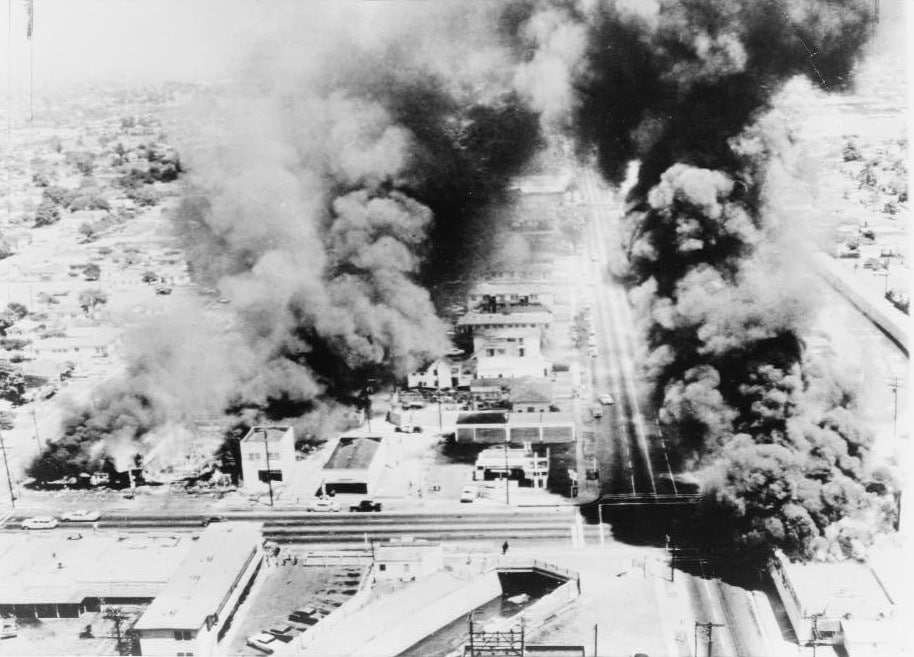
Se:
- Watts Riot (Denstoredanske.dk)
- Watts Riots (Wikipedia.org)
- Rebellion in Watts. By Alan Maass (SocialistWorker.org, August 11, 2015). “The Watts uprising showed that the Black struggle was moving north–and turning toard issues of poverty, inequality and police violence.”
Se også:
- List of race riots: United States: Civil Rights and Black Power Movement’s Period: 1955 – 1977 (Wikipedia.org)
30. september 1965
Kup i Indonesien, efterfulgt af omfattende massakrer på venstrefløjen og fagbevægelsen, og Suhartos militærdiktatur har magten i 32 år frem til maj 1998.
Se:
- Indonesian killings of 1965–66 (Wikipedia.org)
- Transition to the New Order (Wikipedia.org)
- The Indonesian Killings of 1965-1966. By Katharine E. McGregor (Online
Encyclopedia of Mass Violence, August 2009/February 2015, 17 p.)
Artikler/Articles:
Suharto’s US-backed coup in Indonesia supplied a template for worldwide mass murder. By Daniel Finn (World Socialist Web Site, February 15, 2022). An interview with Michael G. Vann: “Under the leadership of Sukarno, postcolonial Indonesia was an optimistic country finding its place on the world stage. Suharto’s 1965 coup drowned that experiment in blood, with US politicians and media cheering on his campaign of mass killings.”
Indonesia: how British spies helped destroy the Communist Party. By Oliver Brotherton (In Defense of Marxism, 8 December 2021). “This year – after six decades of cover up – documents have been released that show the pivotal role played by the British secret services in moulding public opinion in preparation for the slaughter, through a series of propaganda leaflets disguised as the writings of concerned Indonesian emigres.”
Indonesia still hasn’t escaped Suharto’s genocidal legacy. By Michael G. Vann (Jacobin, September 29, 2021). “The US-backed Indonesian dictator Suharto was responsible for some of the twentieth century’s worst crimes. More than two decades after Suharto’s death, his regime’s brutal legacy is still holding back democracy in Indonesia.”
The true story of Indonesia’s US-backed anti-communist bloodbath. By Michael G. Vann (Jacobin, January 23, 2021). Review of John Roosa, Buried Histories: The Anticommunist Massacres of 1965–1966 in Indonesia (University of Wisconsin Press, 2020, 376 p.). “The massacre of the Indonesian left in 1965–66, backed by Washington, was one of the great crimes of the twentieth century. A new generation of scholars has uncovered its long-suppressed history of slaughter of up to a million people in the name of anti-communism.”
Indonesia as testing ground. By Allen Ruff (Against the Current, Issue 210, 2021). Review of Vincent Bevins, The Jakarta Method: Washington’s Anticommunist Crusade & the Mass Murder Program that Shaped Our World (Public Affairs/Hatchett, 2020, 320 p.). “This book recounts how what transpired across the sprawling archipelago nation became a model for U.S.-assisted rightist terror across the Global South.”
Anti-Communist massacres killed Indonesia’s hopes for national liberation and socialism (Jacobin, May 19, 2020). An interview with Vincent Bevins: “The mass slaughter of leftists in Indonesia was more than just another Washington-backed atrocity. It was the prototype for smashing the hopes and dreams of the Left in the developing world — for good.”
The Indonesian counter-revolution. By Alex de Jong (Jacobin, January 2, 2019). Review of Vannessa Hearman, Unmarked Graves: Death and Survival in the Anti-Communist Violence in East Java, Indonesia (National University of Singapore Press, 2018, 288 p.). “The Indonesian genocide was one of the great crimes of the twentieth century. Its victims were leftists who struggled against colonialism and fought for Indonesian self-determination.”
Architects of mass slaughter. By Malik Miah (Against the Current, Issue 197, November-December 2018). Review of Jess Melvin, The Army and the Indonesian Genocide: Mechanics of Mass Murder (Routledge, 2018, 319 p.) + Geoffrey B. Robinson, The Killing Season: A History of the Indonesian Massacres, 1965–66 (Princeton University Press, 2018, 429 p.). “These two books stand on earlier works and are important to understand not only the terror of anticommunism and authoritative forces, but also the complicity of U.S. imperialism.” See also review by Alex de Jong: Indonesia’s red slaughter (Jacobin, June 5, 2018) + review by Max Lane: A crime of Anticommunism (Jacobin, August 9, 2018) + review by Justin Theodra: Indonesia 1965, half a Century later (Monthly Review, Vol.71, No.7, December 2019).
The ideological roots of the Indonesian Communist Party’s defeat in 1965. Part one (In Defence of Marxism, 16 October 2018) + Part two: The illusions in the peaceful nature of the ruling class (22 October 2018). “In this two-part article, Ted Sprague explains how the mighty Indonesian Communist Party was defeated and destroyed in 1965 by Suharto’s forces of reaction, resulting in the murder of millions of communists and their sympathisers.”
The ghosts of 1965. By Rohana Kuddus (New Left Review, Issue 104, March-April 2017, p.45-92). “Half a century after the massacres that wiped out Indonesian communism, and twenty years since the arrival of electoral democracy, how far does the legacy of Suharto’s New Order live on?”
No reconciliation without truth. By Intan Suwandi (Monthly Review, Vol.67, No.7, December 2015). An interview with Tan Swie Ling on the 1965 mass killings in Indonesia. He was a member of PKI and a political prisoner 1966-1979.
The United States and the 1965–1966 mass murders in Indonesia. By Bradley Simpson (Monthly Review, Vol.67, No.7, December 2015). “… declassification of just a fraction of the CIA’s records demonstrates that the agency’s covert operations in Indonesia were more widespread and insidious than previously acknowledged.”
Indonesia’s 1965 massacres on trial in The Hague (Red Flag, 5 December 2015). “Janis Hooper reports on a tribunal into the crimes committed in Indonesia in 1965-68.”
Australia’s role in the 1965-66 communist massacres in Indonesia (Red Flag, October 2, 2015). “Marlene Millott examines the role that Australia and other Western powers played in enabling the massacres.”
The politics of amnesia (pdf). By Olle Tornquist (Economic & Political Weekly, Vol.50, No.40, October 2015; online at Oolle-tornquist.com). “Fifty years ago, a failed uprising against pro-US army generals (though not against the country’s president) in Indonesia became the scapegoat for pogroms and inaugurated a three-decade long period of authoritarianism.”
The forgotten massacre. By Alex de Jong (International Viewpoint, June 2015). “Hundreds of thousands of real and suspected communists were massacred, and a new, military-dominated regime under Suharto was installed.” Se også Jeppe Rohde: De glemte massemord (Solidaritet.dk, 3. august 2019).
Indonesia: Remembering mass-murder. By Alex de Jong (International Viewpoint, Issue 432, January 2011). “The predominant form of the killings was an anti-Communist pogrom, targeting not only the leaders of the Indonesian Communist Party (Partai Kommunis Indonesia, PKI) and its allied organizations but also their rank and file.”
Historian says US backed ‘efficacious terror’ in 1965 Indonesian massacre. By John Braddock (World Socialist Web Site, 7 July 2009). “Brad Simpson … said the US and British governments did “everything in their power” to ensure that the Indonesian army would carry out the mass killings.”
Suharto: Covering up Western complicity (Medialens, February 12, 2008). “The death of the former Indonesian dictator, Suharto, on January 27 could have unleashed a flood of revelations detailing British and American support for one of the 20th century’s worst mass murderers.”
Indonesia 1965: A power move with far-reaching implications. By Clinton Fernandes (ZNet, October 16, 2005; online at Ozleft). “September 1, 1965 CIA … assessed that the Indonesian Communist Party (PKI) was ‘by far the best organised and most dynamic entity in Indonesia’.”
US and British complicity in the 1965 slaughters in Indonesia. By Mark Curtis (Third World Resurgence, Issue 137, 2002; online at Markcurtis.wordpress.com). “With the release of more declassified US government documents on policy towards Indonesia in 1965, complicity in mass murder becomes ever clearer.”
Communism and Stalinism in Indonesia. By Paul Hampton (Workers Liberty, Issue 61, February 2000). “As radical politics revive today in Indonesia, activists will have to learn the lessons from the PKI’s history.”
Petrus Dadi Ratu (Killer becomes king). By Benedict Anderson (New Left Review, Issue 3, May-June 2000). “What lay behind the greatest counter-revolutionary massacre of the 20th century, the extermination of the Indonesian Left in 1965?”
US orchestrated Suharto’s 1965-66 slaughter in Indonesia, Part 1 (19 July) + Part 2 (20 July). By Mike Head (World Socialist Web Site, 1999). “Damning new evidence has come to light pointing to the extent of the involvement of the United States government, closely supported by the Australian and British administrations, in the … massacre of up to one million workers, peasants, students and political activists.”
Lessons of the 1965 Indonesian coup, Part 1-5. By Terri Cavanagh (World Socialist Web Site). “This historical analysis was first published as a pamphlet in 1991. A second edition was printed in 1995.”
Ex-agents say CIA compiled death lists for Indonesians. By Kathy Kadane (States News Service, 1990; online at Namebase.org/Internet Archive) + Indonesia Documentation Project (National Security Archive). “Silent for a quarter-century, former senior U.S. diplomats and CIA officers described in lengthy interviews how they aided Indonesian President Suharto, then army leader, in his attack on the PKI.”
The Indonesian massacres and the CIA. By Ralph McGehee (Covert Action
Quarterly, Fall 1990; online at Third World Traveler). “The CIA desperately wants to conceal evidence of its role in the massacre, which it admits was one of the century’s worst.”
United States and the overthrown of Sukarno, 1965-1967. By Peter Dale Scott (Pacific Affairs, 58, Summer 1985; online at Namebase.org/Internet Archive). “In this short paper on a huge and vexed subject, I discuss the U.S. involvement in the bloody overthrow of Indonesia’s President Sukarno, 1965-67.”
Boguddrag og bøger:
- The Indonesian Massacres (pdf). By Robert Cribb. Chapter 7 in: Samuel Totten and William S. Parsons (eds.), Century of Genocide: Essays and Eyewitness Accounts (Routledge, 2009, p.289-326)
- Suharto: A declassified documentary obit. Edited by Brad Simpson (National Security Archive, Electronic Briefing Book No.242, January 28, 2008)
- Ford country: Building an elite for Indonesia (pdf). By David Ransom. Extract from: Steve Weissman (ed.), The Trojan Horse: A Radical Look at Foreign Aid (Ramparts Press, 1975, p.93-116)
- Indonesia 1965: The second greatest crime of the century. By Deirdre Griswold (World View Publishers, 1978, 96 p.; online at Workers World)
Video/film:
40 Years of Silence – Preview (YouTube.com, 10 min.)
Mass Grave in Indonesia 1-2 (YouTube.com, 9:58 min.)
Mass Grave in Indonesia 2-2 (YouTube.com, 9:18 min.)
The Act of Killing (2012) (Wikipedia.org). See also the companion The Look of Silence (2014) (Wikipedia.org):
‘The Act of Killing’: Politisk surrealisme i en biograf nær dig den 7. november. Af Mikkel Skov Petersen (Modkraft Blog, 28. oktober 2012)
Selverkendelsen er nået til Indonesien. Af Catarina Nedertoft Jessen (Information.dk, 22. oktober 2012). Interview med filmens instruktør, Joshua Oppenheimer.
The 1965-1966 killings (pdf). Review by Ariel Heryanto (The Newsletter, No.61, Autumn 2012)
Se også på Socialistisk Bibliotek:
Tidslinjen: 21. maj 1998, om opstanden mod Suharto.
10. november 1965
Med offentliggørelsen af det senere medlem af “Firebanden”, Yao Wenyuans (dør 23. december 2005), kritik af Wu Hans skuespil “Hai Rui sættes fra sit embede” begynder den kinesiske såkaldte Kulturrevolution.
Se:
Søgning på Yao Wenyuan, på sitet Chinese Posters
Se på Socialistisk Bibliotek:
Linksamlingen: Folkerepublikken Kina, 1949-. Se specifikt afsnittet om Den store Proletariske Kulturrevolution, 1966 her.
















